Exactly one month ago, a small team of us visited Chek Jawa for an intertidal survey trip. During that trip, we covered the Eastern and Northeastern part of Chek Jawa. You can read about my sightings from my earlier
post about that trip.
Today we visited Chek Jawa again for another intertidal survey, but we started from the Southern side (in front of House No. 1) and worked our way towards the Chek Jawa front beacon.
 |
| Chek Jawa Front beacon |
We started off by checking the pillars of the jetty in front of House No. 1 at Chek Jawa.
The first animals that I encounter was the
striped hermit crab (
Clibanarius infraspinatus). This hermit crab is very commonly seen on our shores and usually orange, but the one I saw was blue. Such colour is not commonly seen.
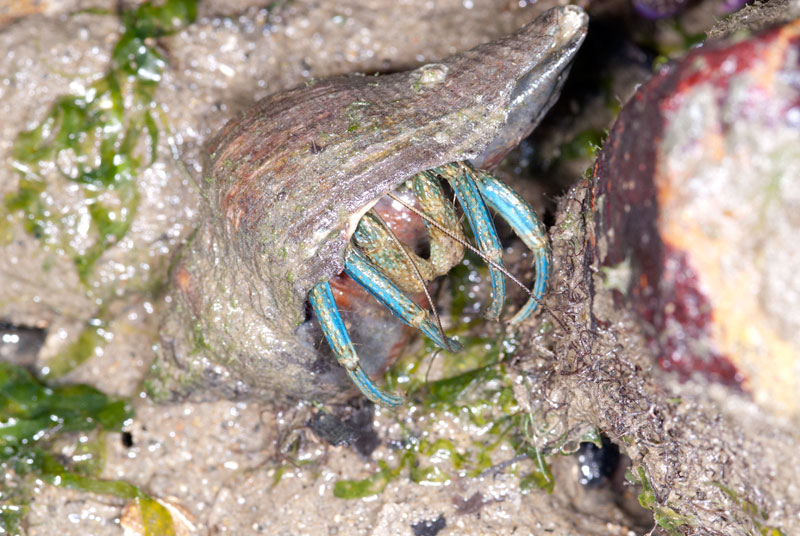 |
| Striped hermit crab in blue |
This looks like a the
striped sand anemone. It is slightly retracted, showing only the tentacles with white bands.
 |
| Striped sand anemone? |
This poor
whelk has its shell surface almost fully occupied by a
snail-hitching sea anemone.
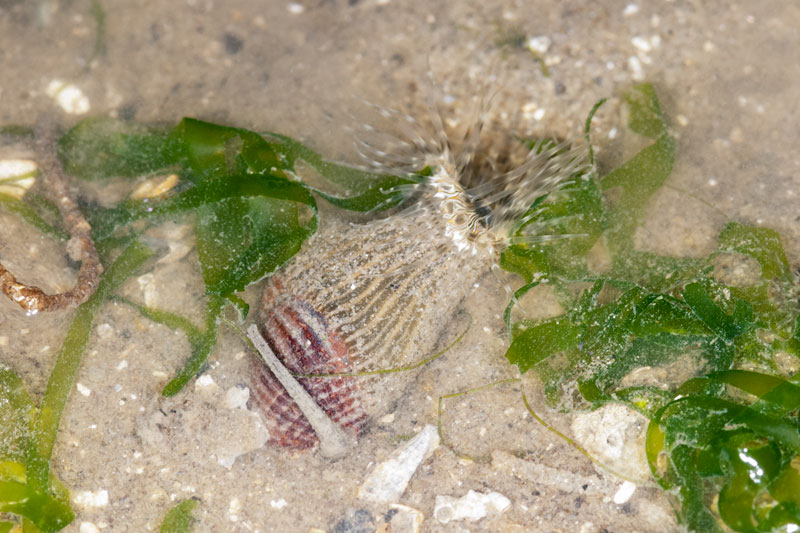 |
| Snail-hitching sea anemone on a whelk. |
What kind of anemone is this? Hmm.... I am not able to identify this anemone. It has a dark coloured band that spreads across the width of the anemone.
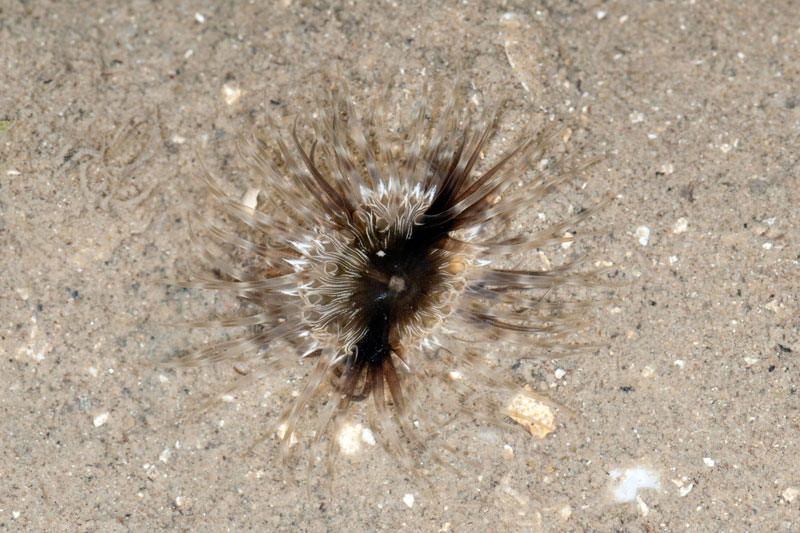 |
| Unknown anemone |
On the pillar, there were a number of flying insects flying around and I managed to capture on that is resting on the pillar. It looks like some kind of fly.
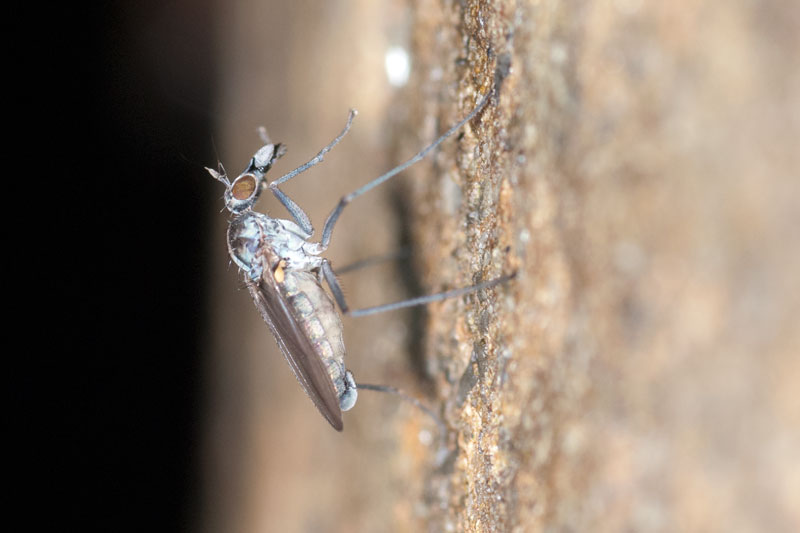 |
| Flying insect resting on the pillar. |
Higher up the pillar, the
lined nerite snail (
Nerita articulata) leaves a trail of slime on the pillar surface where ever it moves. You cannot put the nerite snail back where you took from as the snail will retract into its shell when disturbed. This will cause the suction between the surface and snail to be cut off.
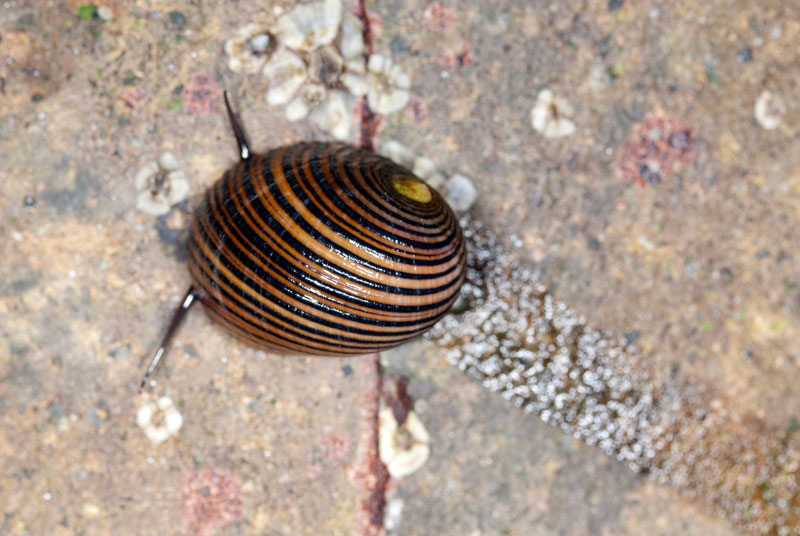 |
| Line nerite snail |
Can you spot the animal in this pictures?
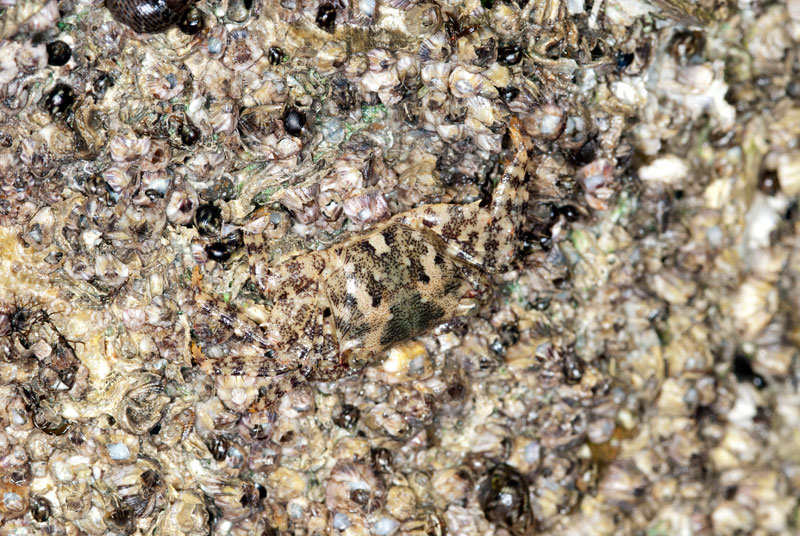 |
| Who and Where am I? |
It is a juvenile
purple climber crab (
Metopograpsus sp.). Can you see it?
 |
| Purple climber crab |
A poor fish swam too close to a
haddon's carpet anemone (
Stichodactyla haddoni) and got stung. The anemone them slowly pulls the stunned fish towards its oral disk.
 |
| Carpet anemone caught a fish |
The moving of the fish towards the anemone's oral disk was captured on video, but I had to abandon it due to the noisy and annoying mosquitoes pestering around me.
On other pillars, I spotted a
blue-spotted flatworm (
cf Pseudoceros indicus) on a group of ascidian looking animal. Could it be feeding on them?
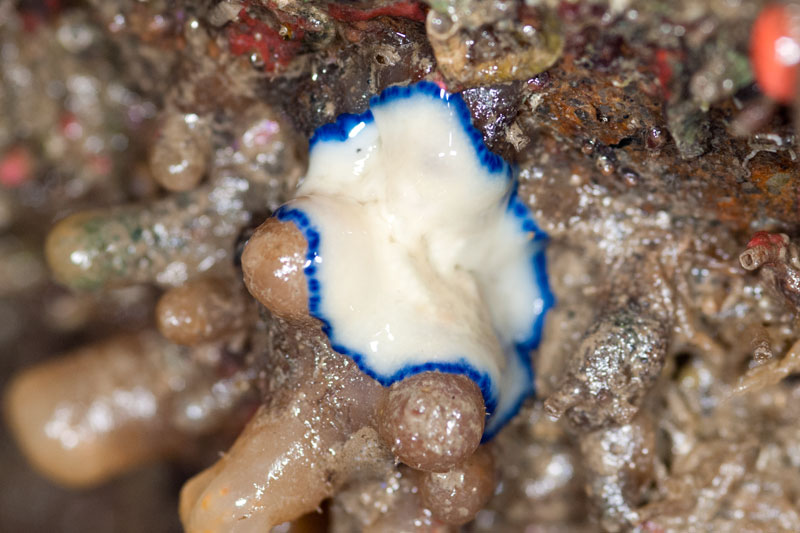 |
Blue-spotted flatworm.
Feeding? |
There were quite a number of
sea fan or gorgonians towards the end of the jetty.
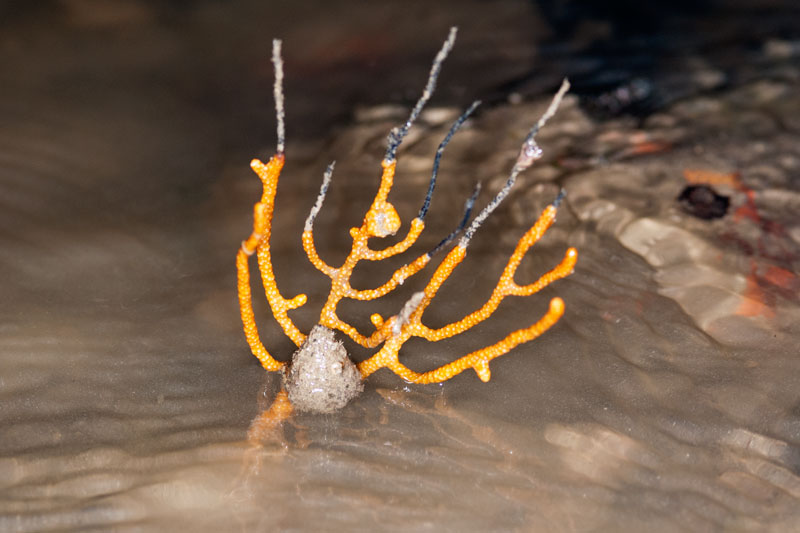 |
| Sea fan |
While checking out the sea fans, Mei Lin accidentally encountered a
mangrove whipray (
Himantura waiga) right in front of her foot and she froze on the spot for a short while. We were in about shin deep waters.
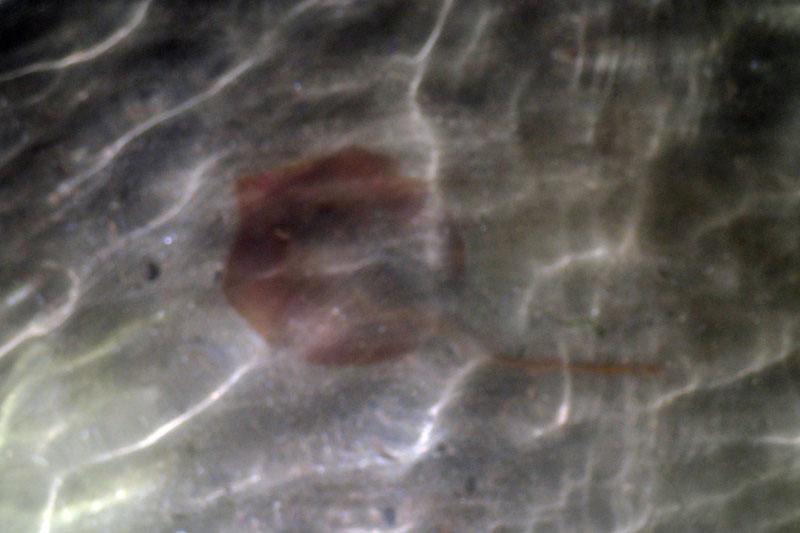 |
| Mangrove whipray |
There are plenty of
biscuit sea stars (
Goniodiscaster scaber) at Chek Jawa and they come in various sizes.
 |
| Biscuit sea star |
Near the beacon, there are two
knobbly sea stars (
Protoreaster nodosus), though they looked kind of lonely together.
 |
| Knobbly sea stars |
Along the way to the beacon, I came across a
huge cake sea star (
Anthenea aspera). This is the largest cake sea star I have seen. I have a photo of my size 8 bootie next to the sea star for size comparison.
 |
| Cake sea star |
 |
| Comparison between sea star size and sponge. |
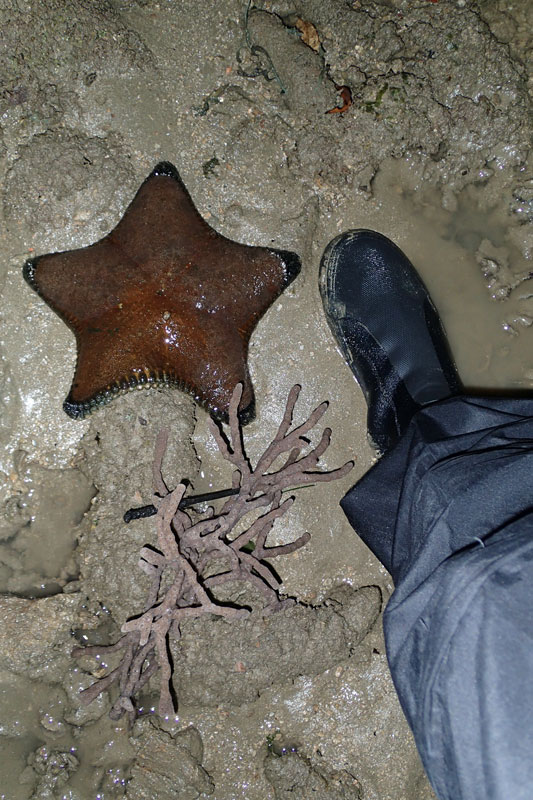 |
| Sea star size compared to my size 8 bootie |
 |
| It's bigger than my hand! |
Such a huge cake sea star makes photography of details a lot easier. Finally, I could get a good picture of the tiny bivalve pedicellariae on the underside of the cake sea star.
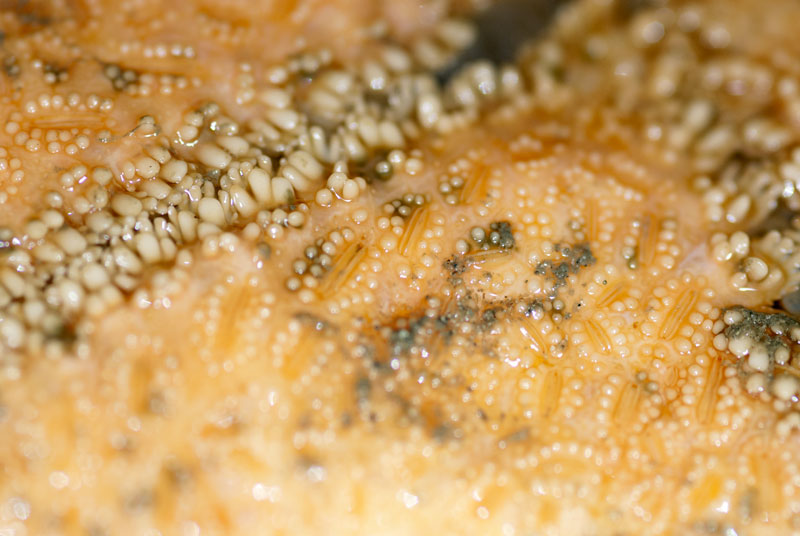 |
| Tiny bivalve pedicellariae |
Mei Lin spotted two
little ruby flatworms (
Phrikoceros baibaiye). It is very easy to miss this flatworm as they looked like orange melted sponge or ascidians. They are quite active and move rather fast, but not the fastest flatworm I had encounter. (*warning* The colour may be too striking for your eyes.)
 |
| Little ruby flatworm |
 |
| Moving away quickly. |
While heading to the Chek Jawa Front beacon, this poor
smooth snapping shrimp (
Alpheus sp.) was stranded on the sand.
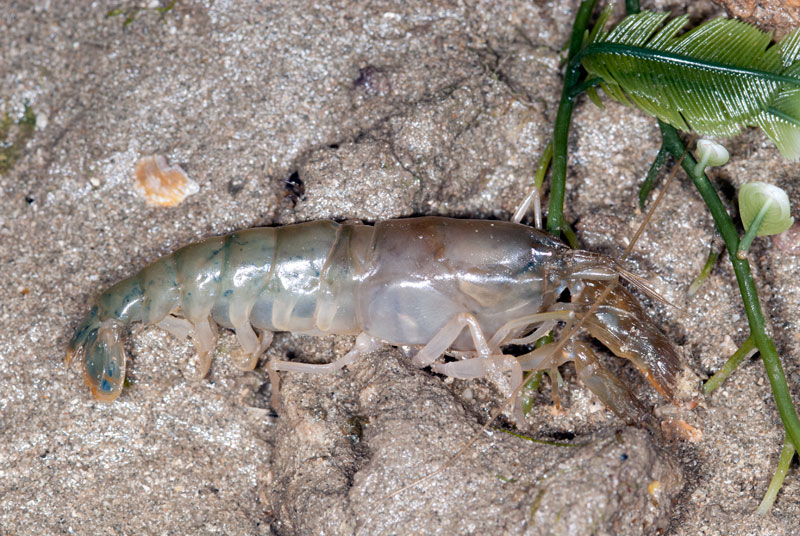 |
| Right side profile |
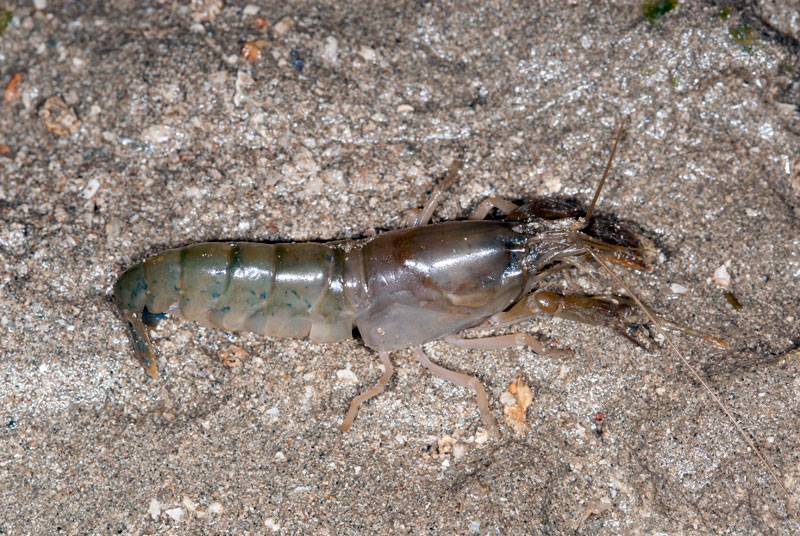 |
| Smooth snapping shrimp stranded on sand |
Of course, I took the snapping shrimp and place it in a nearby shallow pool with a burrow. The shrimp was happy to be back in water and it went into the burrow quickly.
 |
| Smooth snapping shrimp in shallow pool. |
I saw the
red shrimp again at Chek Jawa in a vast patch of seagrass. However I did not observe the head in burrowing behaviour I saw yesterday at Pulau Sekudu.
 |
| Red shrimp hiding among seagrass and sea lettuce seaweed. |
As we end the trip, a
red ribbon worm emerges from its burrow and stayed stationary on the sand for what we would considered as a long period of time. It is usually very difficult to photograph this worm as they retract into their burrows at the slightest sense light or disturbance.
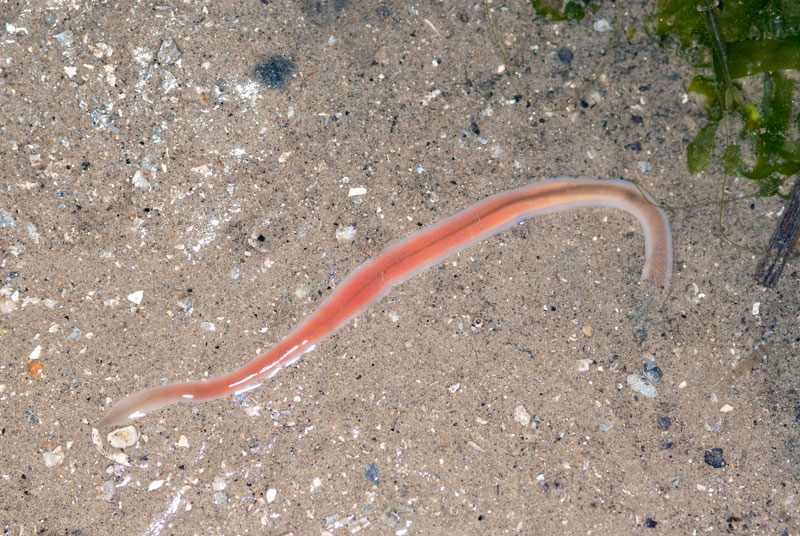 |
| Red ribbon worm |
My second intertidal survey trip to Chek Jawa is made possible with permission from NParks. Also not forgetting the crazy small group of us who woke up around 2 am on a working day for this trip.
Do not ask me how I did it or how manage to survive the work day because I have no clue how I manged it but somehow, I did and survived.
Posts by others on this trip:
Kok Sheng -
A glimpse of the glorious beacon area at Chek Jawa
Mei Lin -
Chek Jawa checkup - 21082013
Ria Tan -
Alive at the Chek Jawa beacon
My past post on Chek Jawa intertidal:
My first Chek Jawa intertidal survey trip












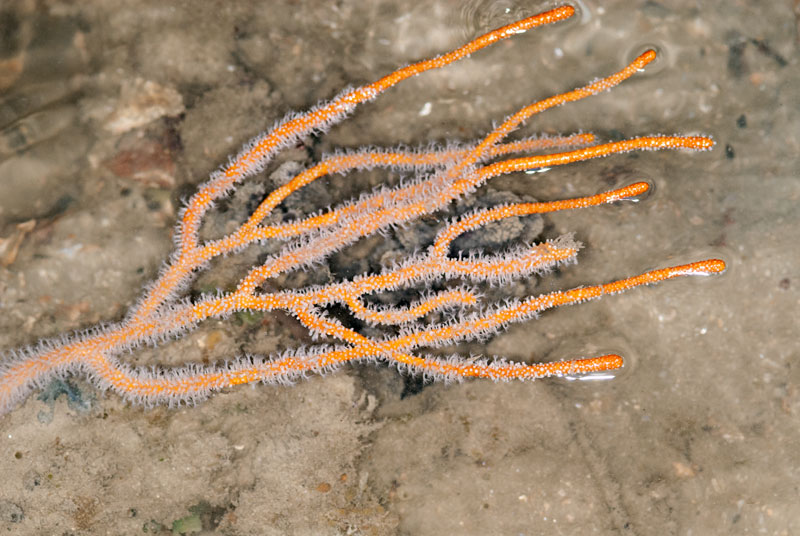
















No comments:
Post a Comment